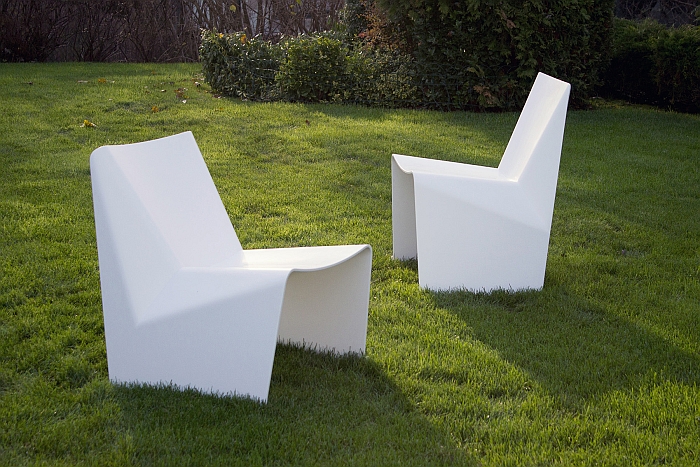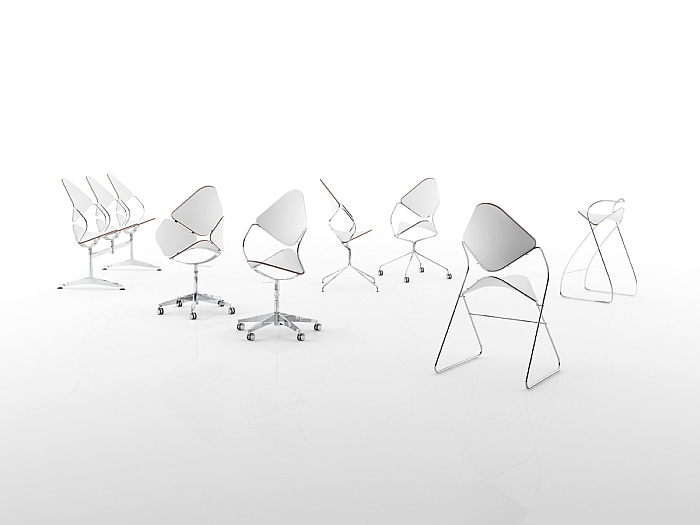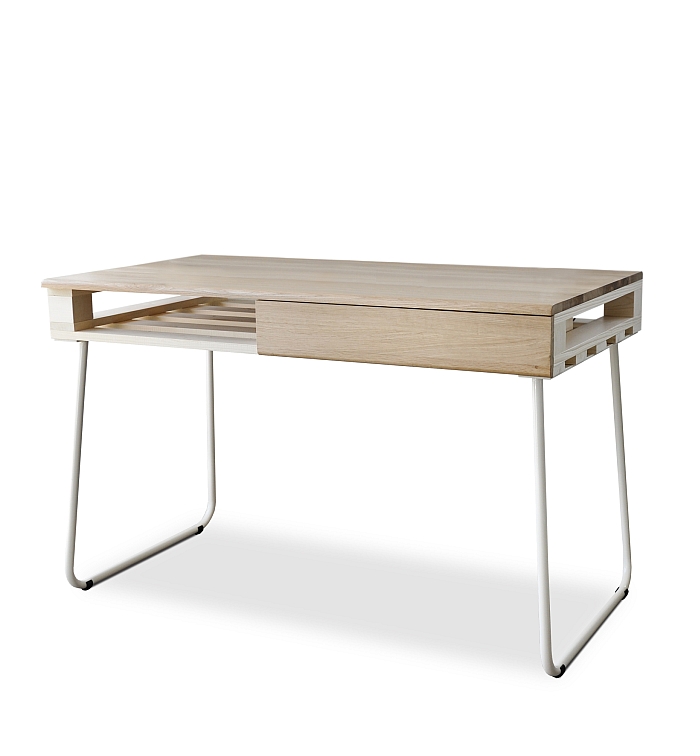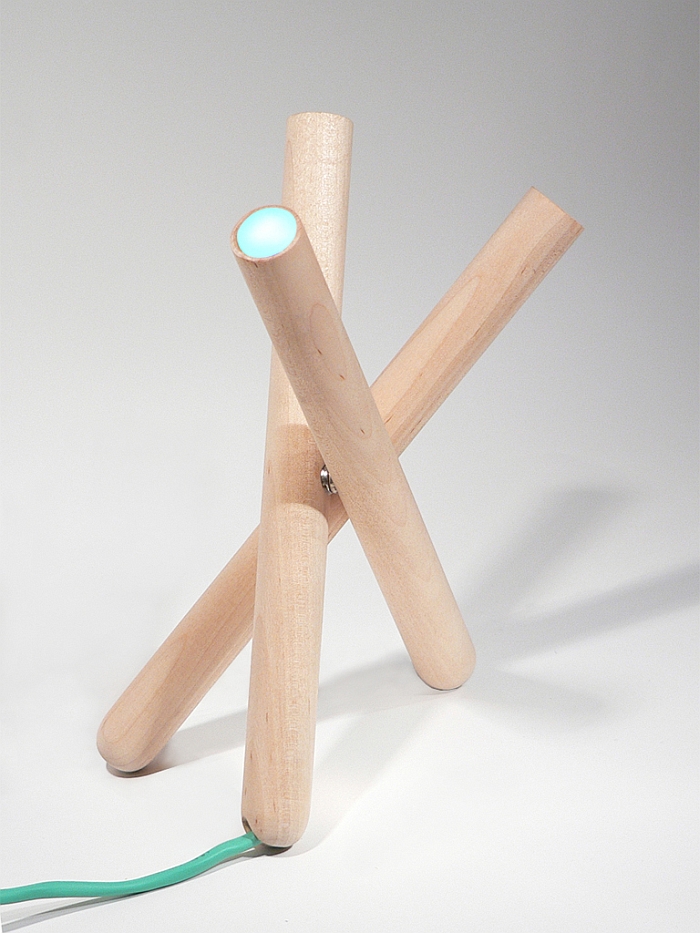smow Blog Interview: András Kerékgyártó – We need a more open, honest discussion around design in Hungary
The history of furniture design has an unignorable, if subtle and background, Hungarian accent; Marcel Breuer was one of the driving forces at Bauhaus and through his work with steel tubing, moulded plywood and sheet steel he helped advance ideas of contemporary furniture design, and continues to inspire; Paul László was one of the genuine pioneers of American industrial design and contributed to George Nelson’s first Hermann Miller collection in 1948; and while Ernő Goldfinger may be best known for his brutalist architecture, and being the name giver for James Bond’s most aureate and alluring adversary, his experimental furniture works very neatly predict the development of post-modernism.
More recently Hungarian designers have had less to say, have been conspicuous by their absence on the international scene; however, as we noted in our post from the exhibition madeinhungary at Budapest Design Week 2014, that may be slowly changing.
Or rather Hungarian designer András Kerékgyártó noted that things may be slowly changing. We merely quoted him.
Born in Budapest András Kerékgyártó initially studied furniture design at the city’s Moholy-Nagy University of Art and Design before completing a masters degree at the Aalto University of Art and Design, Helsinki. We first became aware of András Kerékgyártó when we saw his Biela chair at the aforementioned madeinhungary exhibition. Originally developed as a moulded plywood chair Biela is now produced in cooperation with Budapest based manufacturer Nezozen from Krion, a proprietary material reminiscent of stone but with numerous handling and functional advantages. Particularly impressive with the Biela design is that although formed from two components, the components are identical, thus one has a large moulded object which requires only one mould, and thus saves resources and money. At the 2015 Hungarian Design Awards Biela was one of the winners in the Product Design Category, the jury expressing their “great anticipation” that Biela “might make it into the forefront in the global arena of contemporary furniture.” In addition to developing the Biela collection András has also realised the desk project desqest for Zebramade and is currently developing a new furniture collection for Hungarian producer Plydesign.
To find out more about the reality of life as a furniture designer in modern Hungary we met up with András and began as ever by asking, why design……..
András Kerékgyártó: To be honest it probably wasn’t a concious decision. Me and a friend decided in Kindergarten that we were going to be car designers, and from that moment on spent our time drawing cars and taking lessons in drawing to enable us to draw better cars and so when we were in secondary school there was no real decision as to which college we would apply to. However once I was at the Moholy-Nagy University I realised that I couldn’t find the depth which I was looking for in car design, and so I moved to furniture design because I felt that was a more complex challenge and one where as a designer you have control over the complete result. As a car designer you generally only work either on the exterior or on the interior and only have control over your part of the car.
smow blog: Which means the course at the Moholy-Nagy is so designed such that you can switch specialities, or…..
András Kerékgyártó: When I was there the first two years were a general introduction and then you could specialise, between car design, furniture design, jewellery design or industrial design. These days they have a divided Bachelor + Masters structure.
smow blog: And with the furniture design course was there a focus, was it an especially practical course or more theoretical….
András Kerékgyártó: That is one of the biggest problems with the course at the Moholy-Nagy University, namely there is no real practical component, and furniture design isn’t really possible without knowing the practical aspects!
smow blog: Which means the course was all theoretical, or….?
András Kerékgyártó: You work with concepts and then you develop renderings, drawings, occasionally a small scale model, but that was about it!
smow blog: And is that simply because there are no workshops, or…….?
András Kerékgyártó: There are workshops but they are pretty poor, however much more than that there was no infrastructure that would allow them to be used properly, including, for example, no contact with external companies to help you realise projects. But above all, in my opinion, there was no real will in the college to guide students towards a more practical training. Furthermore, all the staff members are doing the work of two or three people, every one is doing a little bit of everything so that nobody is really in charge of anything and there is no field which has a real owner who is responsible and who is ensuring that area develops.
smow blog: Which we presumably means there is also little or no chance of internships or preparation for the reality of life as a designer….?
András Kerékgyártó: Exactly, when I graduated I had no idea whatsoever what real life outside the university is like and that is quite hard because you assume that when you’re finished your studies that you will come out to standing ovations and that companies will be queuing up to offer you work. But no one tells you that when are finished your studies that you will have to manage yourself, be able to establish contacts with companies, communicate with them in a professional manner and so I think it would be very important if someone was to explain on the first day how the reality is and then ask, “do you really want to do this, because it’s tough!”
smow blog: It’s interesting to hear you say such because we know you are also currently teaching at the Moholy-Nagy University………
András Kerékgyártó: A principle motivation for taking up the position was to change the status quo as it had caused me so many headaches back then I wanted to try to improve the situation for current and future students, and also push those students who have maybe become too entrenched in the current situation to go further and to achieve as real and practical a training as possible, maybe even further than the university’s own infrastructure would allow. In that respect, for example we are currently undertaking a project in cooperation with Plydesign, a manufacturer of plywood components with whom I am also cooperating on various furniture projects. It was Plydesign’s idea to offer a course and I happily jumped at the opportunity as I could see the potential benefit for the students from such an industry cooperation. In addition it is quite interesting to see the situation from the other side, not just from a students perspective, and hopefully I may now have a real opportunity to influence the course of events from the inside.
smow blog: And presumably these failings in Budapest, these headaches, were then the reason why you subsequently studied in Helsinki?
András Kerékgyártó: Yes. After graduating in Budapest I really didn’t feel that I knew enough about the practical aspects and also didn’t feel that I would be able to go to a manufacturer with my project and to argue for my design, because I simply didn’t have sufficient knowledge and experience. During my time at the Moholy-Nagy University I had spent an Erasmus semester at the Lahti University of Applied Sciences, could see the emphasis on the practical aspects of design in Scandinavia and so decided to do a masters there. And I must say there I found exactly what I had hoped for.
smow blog: Following your return from Helsinki did you initially contact Hungarian producers or……?
András Kerékgyártó: No, not really. I’d had some pretty bad experiences with Hungarian companies, so at the beginning I was rather sceptical regarding the opportunities, or the lack of them, in Hungary. I had some good prototypes that I had made in Finland and so decided the best thing to do would be to present them at an exhibition, and so applied to participate at Salone Satellite in Milan, was accepted and so the first few months after my return were spent preparing for the exhibition, and that proved to be valuable as both Nezozen and Plydesign got into contact with me as a result of press reports from Salone Satellite.
smow blog: And that wouldn’t have happened just through contacting manufacturers…..
András Kerékgyártó: I don’t think so, or at least not as quickly. I guess I appeared much more credible coming straight out of Milan than if I had approached them “out of the blue” without such a “credential”, and so in a way it saved quite a bit of effort, and I feel really lucky. Especially with Nezozen it was completely unexpected because of their attitude of “lets try and see what happens!”, is not at all typical in Hungary, so much so that at first I was a little distrustful! However, Nezozen are a company who enjoy a challenge, which again isn’t usual in Hungary. Normally, for example, if you approach a small workshop with an idea and ask them to produce it for you, they look at your idea, and say it can’t be done! And that’s it. So finding Nezozen was a real bit of luck. And one can say similar things about Plydesign: they also have a young and energetic CEO who is willing to take risks and to invest into new products, which is very rare in Hungary, most others find it too hazardous. And so yes I am very lucky to have found those very few companies in this country who invest in design and innovation and who thus can allow me to do what I studied and what I like and enjoy.
smow blog: In terms of your work in general, do you have a focus, is there for you a common idea flowing through the objects?
András Kerékgyártó: My work is always project specific, but what I always try to achieve is an honesty in the object, it should look like what it is, and in terms of the structure there shouldn’t be any superfluous elements, it should be that you can neither take from it, or add to it, there should be a reason for every component and for the shape of every part of the object. I am not trying to put myself, my personality in the forefront or into the object, but rather allow it to kind of “find it’s own shape”, the object is not a manifesto, but rather an attempt to find the most appropriate solution to the given problem or situation.
smow blog: What we also see is objects that are easy to produce, where the production process is as simple as possible. Is that something you actively aim for or something that arises naturally from this search for honesty?
András Kerékgyártó: As a designer I have to take the manufacturer into consideration and respect their wishes, and I am very lucky that the companies with whom I am working also respect my position. With the Biela chair for example I wasn’t very happy with one of the edges, with the way it flowed, and wanted to change it. I don’t think the manufacturer really understood why, but had no problems with me changing it. And so I take his position into consideration he takes mine and then together we achieve the best. Specifically in terms of production, furniture is a very price sensitive market and the manufacturers naturally look at the bottom line, and as such as a designer you need to ensure you achieve the best possible result with the least possible resources; which sounds like a restriction but is actually a very good basis for creativity because the restrictions force you to think deeper about the project, to think in new ways, to go further and ultimately to think more creatively. I am starting to believe that uniqueness and the level of innovation are only a question of how far one is willing to go: the deeper you delve into something, the further you get from the obvious, the less likely somebody can follow you and match your results.
smow blog: Restrictions and creativity is a good link, you’ve mentioned some of the problems associated with being a designer in Budapest and Hungary, we don’t feel that confident asking, but…. is, despite everything, Budapest a good city to be based as a designer? Can one work in the city?
András Kerékgyártó: It can be complicated. If you need, for example, special components, you really need to know where to go, because not everything is universally available and as I already said not all workshops are that helpful. However once you know where to go then working is quite straightforward. However I think the more important question is not that of the infrastructure but that of the quality of the design discussion in Hungary and the generally very low quality of the design criticism. Often when someone shows their new product, there is either jealousy or unreasonable applause: neither reaction of course is about the object itself. At the moment it is a big result if something is actually realised, yet no one is really questioning if the objects are good, have been made in the best possible way, or are even necessary. Yet exactly just such a discourse about design is very important!
smow blog: And can you explain that ?
András Kerékgyártó: I don’t think one can or should speak generally, however in Hungary everyone tends to be very possessive and protective of their work and you can easily offend if you criticise something in the wrong way. For example at the Hungarian Design Awards ceremony a visitor started asking me about a cushion that was on the Biela chair, I understood that he didn’t think the cushion was appropriate or fitting for the chair, but he didn’t tell me that directly, for fear of offending me, rather I had to slowly pull it out of him. His opinion was a good feedback, but he was very concious of not upsetting me, yet if he hadn’t been so careful maybe an even more useful exchange of ideas and opinions could have taken place. Ultimately criticism is useful to help you make things better, if you’re not accessible to other points of view and other opinions then you are basically restricting the development possibilities of your own products.
smow blog: And not just your products, but if everyone in Budapest is doing such then you’re also limiting the development of the community as a whole……
András Kerékgyártó: Exactly, it is completely counter-productive, and that at the individual level and also throughout the whole community and so we need a more open, honest discussion around design in Hungary, and a lot of the designers here need to be more open and welcoming of opinions.
smow blog: In your case, do you think that it helps that you were in Finland and were exposed to the Finnish culture in such respects?
András Kerékgyártó: The Finns are very straightforward and I was very aware that the criticisms were very open and that the tutor would check our works from every possible perspective and question the smallest aspect, why that screw? why there? And then that really helps you understand your own work better, so much so that I think the Biela chair is more interesting from below than above.
smow blog: Briefly to end, looking to the future, are you planning staying in Budapest, or……
András Kerékgyártó: Currently I am pretty happy with how things have worked, with the partners I have found and with the projects I am developing, and so for the immediate future I am more or less tied to Budapest. However things will change and I could well imagine moving somewhere else and experiencing a different environment if the chance arose and the situation was good, but that is all open at the moment.
smow blog: And might we find you going back to car design at some point?
András Kerékgyártó: No I can’t see that happening. As I said earlier I need the depth that furniture design offers and I don’t really feel comfortable with something that only goes, lets say, skin deep. As designers we have a great responsibility, we’re designing things for people and I wouldn’t feel comfortable with a project which is only skin deep, rather I need to be sure that I have done everything in my power to ensure I have created a worthwhile project that people enjoy using and which adds value to their lives.
More information on András Kerékgyártó and his work can be found at: https://andraskerekgyarto.wordpress.com/
Tagged with: András Kerékgyártó, Biela, Budapest




